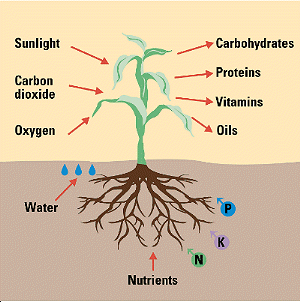
Role of PH in soil (Nutrient Availability)
Availability of all nutrients depends on soil PH. Generally macronutrients with Mo availability increase as soil PH increase. On the other hand, the availability of micronutrients except Mo decreases with the increase of soil PH. This is suitable PH for available of all nutrient is around 6.5 7.5.
P availability: These element (p) availability is maximum when soil PH range 6 7.5. The availability of P in acid soils (low PH) is hamper due to formation of Fe, Al, Mn phosphate.
(i) Al(OH)3 + H2PO4 → Al(OH)2-H2PO4 + OH- → Al(OH)2
(ii) Fe(OH)3 + H2PO4 → Fe(OH)2H2PO4 + OH- → Fe(OH)2 P deficiency is very likely in low PH. e.g. Modhupur.
(iii) P fixation occurred in calcareous soil up to 8.5 PH and increases the availability of P.
CaCO3 + H2PO4 → Ca3(PO4)2 + CO2 ↑ + H2O
Zn availability: Zinc availability is low at high soil PH due to the formation of insoluble Zn(OH)2 or ZnCO3.
Zn2+ + H2O → Zn(OH)2+ H+ Zn2+ + CaCO3 → ZnCO3+ Ca2+
Toxicity of Al, Fe and Mn: In strong acidic soil (PH < 5) toxicity of Al, Fe and Mn may arise. They are more soluble in acidic condition and absorption is more, as a result toxicity arise.
Microbial activity: Generally bacteria are active in neutral and slightly alkaline soils while fungi are active in acidic soil. So, organic matter decomposition, N2 fixation, and nitrification are tremendously reduced when soil PH below 5.5. CO(NH2)2 → NH4+ → NO2 → NO3